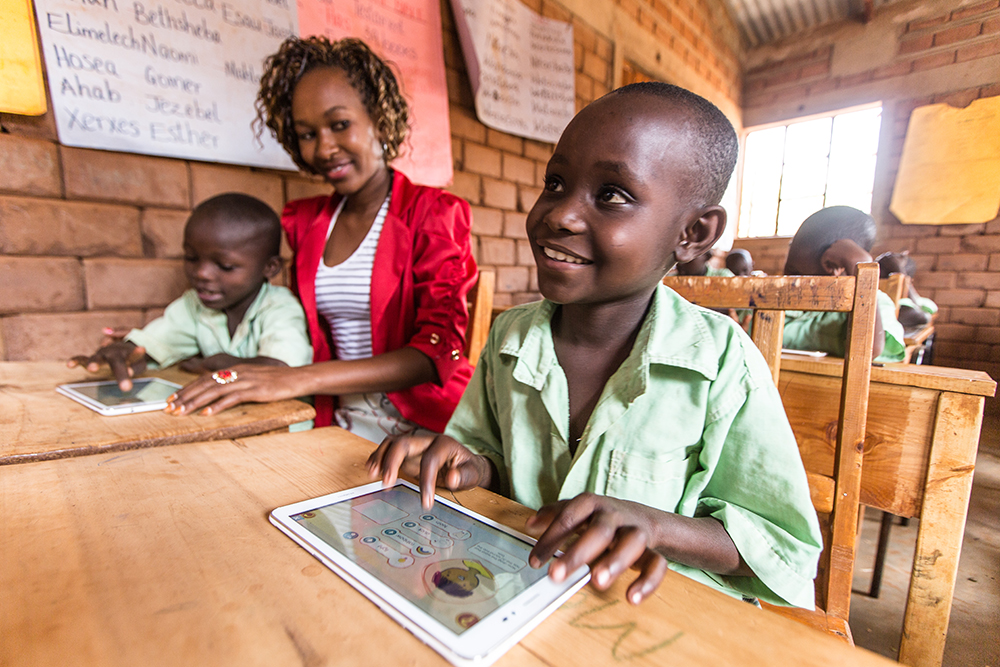Is knowing how technology works the same as knowing how to use technology? Are our children truly digital natives? How can they develop a positive digital identity? Equipping students with the tools and training to become good digital citizens should be one of the key subjects in the educational debate. But is it? Are we really aware of its importance? Are we teaching digital skills well?
The mere fact that young people understand the mechanics of social media and know how digital technology works doesn’t give them the ability to know how to interact responsibly with it. Contrary to what has been said, being born and raised in a fully technological world doesn’t automatically make them digital natives. Therefore, the teaching, learning and promoting of digital citizenship is essential.
The skills teach us how to work these new technologies. Digital citizenship is the ability to use technology responsibly, effectively and safely. Moreover, (and this is pointed out in various skills frameworks) they teach us to reinforce the capacity for digital creation, collaboration between educational agents and the solving of real problems and challenges in this new digital society. These are key aspects to ensure meaningful learning in the digital age. These innovations, highlighted in the HundrED Global Collection, help students learn digital skills while developing their digital identity, and they teach them to have positive interactions online, understand how content is consumed and behave responsibly in the digital world.
#ICANHELP: Empowerment and digital wellbeing
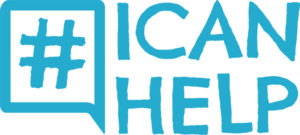 United States
United States
Dealing with issues such as cyberbullying, security or privacy requires training. Therefore, #icanhelp has set out to transform the way current and future generations of students use social media and digital technology in everyday life to make a positive impact through responsible use. They achieve this through the implementation of a relevant and practical curriculum that has been specifically designed by teachers to prevent negativity and spread positivity and digital citizenship in schools, and which has already reached over 2.4 million students and teachers.
Makers Empire 3D Learning Program
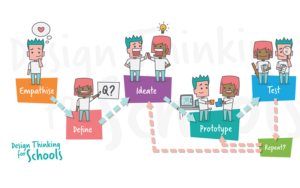 Australia
Australia
Makers Empire provides teachers with tools, skills and resources to teach little ones about design and technology and engage young learners in solving real problems. Makers Empire 3D is the only 3D design application made for primary school students (up to 8 years old) and it is attractive and easy to use. The tutorials and challenges build students’ creative confidence and develop their Design Thinking skills and interest in STEM subjects. It has a teachers’ dashboard that makes it easier for teachers to organise their classes: with the dashboard they can manage students’ designs, assign and evaluate their work. Certified professional development and training resources are also available to them.
Raranga Matihiko / Weaving Digital Futures
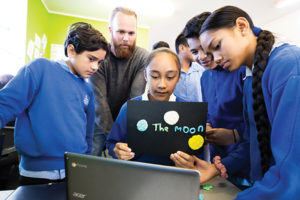 New Zealand
New Zealand
How can robots, virtual reality, 3D painting and augmented reality contribute to learning about the First World War, marine pollution and climate change or even the phases of the moon? The answer is Raranga Matihiko, a programme from New Zealand that uniquely combines high-quality technological learning with relevant and meaningful content for the most vulnerable students. It does so through museums and art galleries located across the country. They design customised plans for each school and implement these programmes with the help of experts, visits to the museums and their rooms equipped with state-of-the-art technology. In addition, they work with teachers to develop their confidence and skills in teaching technology, and they get families and the whole community involved. Children learn not only computational thinking skills, literacy and digital citizenship, but also soft skills such as critical thinking, self-confidence and teamwork.
TUMO Centre for Creative Technologies
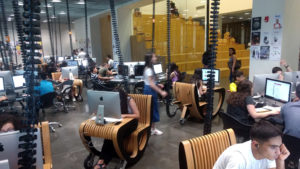 Armenia
Armenia
The TUMO Centre for Creative Technologies is a free educational programme that puts teenagers in charge of their own learning in design and technology. The programme covers 14 objectives: animation, game development, film making, website development, music, writing, drawing, graphic design, 3D modelling, computer programming, robotics, motion graphics, photography and new media, and it alternates between independent learning activities supported by trainers, together with practical workshops taught by the centre’s specialist staff and project labs led by industry leaders from around the world.
TUMO has offices in several Armenian cities, as well as in Paris, Beirut, Tirana, Berlin and Moscow. So that youngsters in smaller and more remote villages and towns also have the opportunity to access their programme, they have developed TUMO Boxes, which are a type of “mini” centre, easily transportable and inexpensive, but with the technical equipment necessary to be able to follow the programme.
What conclusions can we draw from these innovations?
The use and inclusion of new technologies in teaching must take a proactive view and approach to student learning. As we have mentioned in previous posts, this implies having a vision focused on digital skills. In this case, we highlight digital creation, problem-solving, and above all, digital citizenship and the teaching of the skills needed to use digital technology safely and responsibly. Regarding the latter two aspects, they are inextricably linked and must be integrated into all education systems and practices.
- The use and inclusion of new technologies in teaching must take a proactive view and approach to student learning. As we have mentioned in previous posts, this implies having a vision focused on digital skills. In this case, we highlight digital creation, problem-solving, and above all, digital citizenship and the teaching of the skills needed to use digital technology safely and responsibly. Regarding the latter two aspects, they are inextricably linked and must be integrated into all education systems and practices.
- The number of innovations and programmes promoting the responsible use of new technologies is still far below the real needs of digital society. We need more programmes that integrate digital literacy and digital citizenship, both in formal and informal education, always in a holistic way, i.e., considering all other core digital skills, as exemplified in the programmes analysed above.
- Teachers, as a central figure in the educational process, as well as parents, need continuous training in this regard. They are more digital migrants than digital natives and they require the appropriate training to be able to support their students and teach them how to build a healthy and positive digital identity.
- Civil society, and sometimes private enterprise, is taking the initiative and responsibility in creating and implementing these programmes, given the shortcomings of formal training provided to date.
Today, education cannot neglect the teaching of these skills and the wellbeing of the future society is at stake in this field. Let’s not miss the boat, tomorrow may be too late!
*This article forms part of a series of four in which we analyse the initiatives and programmes featured in the HundrED report. In the first post of this series, we explain the selection criteria and how the HundrED report is drawn up. In the second we explain and analyse some of the digital initiatives and programmes for socio-educational intervention in vulnerable contexts. In the third we analyse initiatives devoted to teaching and learning the skills for 2030 or those known as 21st-century skills.



